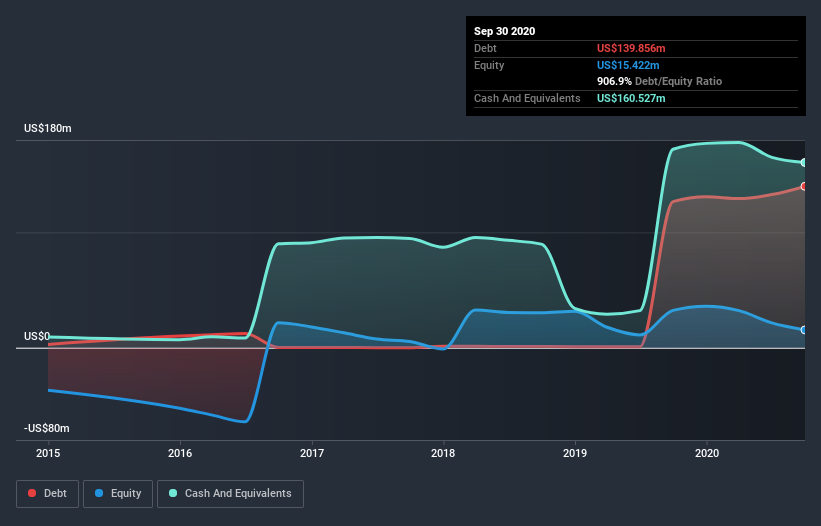Talend (NASDAQ:TLND) Has Debt But No Earnings; Should You Worry?
Some say volatility, rather than debt, is the best way to think about risk as an investor, but Warren Buffett famously said that 'Volatility is far from synonymous with risk.' So it seems the smart money knows that debt - which is usually involved in bankruptcies - is a very important factor, when you assess how risky a company is. We can see that Talend S.A. (NASDAQ:TLND) does use debt in its business. But is this debt a concern to shareholders?
Why Does Debt Bring Risk?
Debt assists a business until the business has trouble paying it off, either with new capital or with free cash flow. If things get really bad, the lenders can take control of the business. However, a more frequent (but still costly) occurrence is where a company must issue shares at bargain-basement prices, permanently diluting shareholders, just to shore up its balance sheet. Of course, plenty of companies use debt to fund growth, without any negative consequences. When we examine debt levels, we first consider both cash and debt levels, together.
See our latest analysis for Talend
How Much Debt Does Talend Carry?
As you can see below, at the end of September 2020, Talend had US$139.9m of debt, up from US$126.6m a year ago. Click the image for more detail. However, it does have US$160.5m in cash offsetting this, leading to net cash of US$20.7m.
How Strong Is Talend's Balance Sheet?
We can see from the most recent balance sheet that Talend had liabilities of US$171.8m falling due within a year, and liabilities of US$187.9m due beyond that. On the other hand, it had cash of US$160.5m and US$57.5m worth of receivables due within a year. So its liabilities total US$141.6m more than the combination of its cash and short-term receivables.
Since publicly traded Talend shares are worth a total of US$1.24b, it seems unlikely that this level of liabilities would be a major threat. Having said that, it's clear that we should continue to monitor its balance sheet, lest it change for the worse. Despite its noteworthy liabilities, Talend boasts net cash, so it's fair to say it does not have a heavy debt load! The balance sheet is clearly the area to focus on when you are analysing debt. But it is future earnings, more than anything, that will determine Talend's ability to maintain a healthy balance sheet going forward. So if you want to see what the professionals think, you might find this free report on analyst profit forecasts to be interesting.
Over 12 months, Talend reported revenue of US$276m, which is a gain of 16%, although it did not report any earnings before interest and tax. That rate of growth is a bit slow for our taste, but it takes all types to make a world.
So How Risky Is Talend?
We have no doubt that loss making companies are, in general, riskier than profitable ones. And the fact is that over the last twelve months Talend lost money at the earnings before interest and tax (EBIT) line. Indeed, in that time it burnt through US$27m of cash and made a loss of US$72m. But the saving grace is the US$20.7m on the balance sheet. That kitty means the company can keep spending for growth for at least two years, at current rates. Summing up, we're a little skeptical of this one, as it seems fairly risky in the absence of free cashflow. The balance sheet is clearly the area to focus on when you are analysing debt. But ultimately, every company can contain risks that exist outside of the balance sheet. For example, we've discovered 3 warning signs for Talend that you should be aware of before investing here.
At the end of the day, it's often better to focus on companies that are free from net debt. You can access our special list of such companies (all with a track record of profit growth). It's free.
This article by Simply Wall St is general in nature. It does not constitute a recommendation to buy or sell any stock, and does not take account of your objectives, or your financial situation. We aim to bring you long-term focused analysis driven by fundamental data. Note that our analysis may not factor in the latest price-sensitive company announcements or qualitative material. Simply Wall St has no position in any stocks mentioned.
Have feedback on this article? Concerned about the content? Get in touch with us directly. Alternatively, email editorial-team@simplywallst.com.

